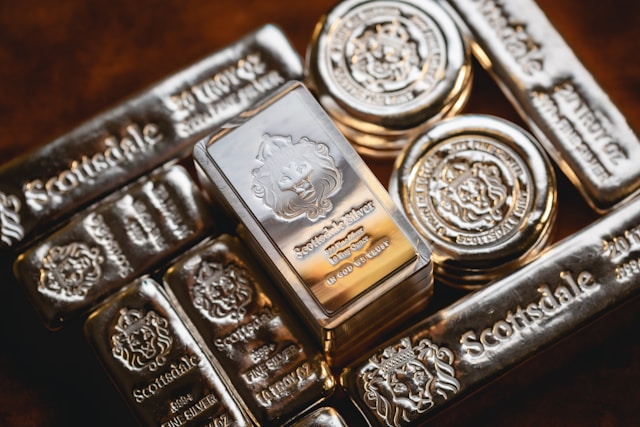Throughout history, silver has played a crucial role in financial markets and economies worldwide. From ancient civilizations to modern times, the historical significance of silver bars as a form of currency, investment, and trade commodity cannot be understated. Recently, websites like https://azbigmedia.com/business/india-is-importing-silver-bars-at-a-historic-rate/ suggest that there is an increase in the number of investors turning to silver. Below is a detailed look at the rich history of silver bars and their impact on financial markets throughout the ages.
Ancient Civilizations
The use of silver bars dates back thousands of years. In ancient civilizations such as Mesopotamia, Egypt, and Greece, silver was used as a medium of exchange for trading goods and services. Its scarcity, durability, and divisibility made it an ideal form of currency. Silver bars allowed for standardized weights and measures, facilitating fair trade and economic growth.

The Birth of Monetary Systems
As societies evolved, silver became an integral part of the birth of monetary systems. In ancient Rome, the denarius, a silver coin, became the standard currency. The Roman Empire’s vast silver reserves fueled its economy and facilitated international trade. Similarly, during the Middle Ages, silver bars were widely accepted as a means of payment and were instrumental in the emergence of banking systems.
The Silver Standard
In the 19th and early 20th centuries, the silver standard played a significant role in global financial markets. Various countries, including the United States, adopted a bimetallic standard where both gold and silver were used as the basis for currency. This system allowed for a fixed exchange rate between the two metals, promoting stability in international trade.
The Rise of Fiat Currency
The 20th century witnessed a shift away from the silver standard towards fiat currency systems. Governments gradually abandoned the use of precious metals as backing for their currencies, opting for paper money instead. This transition had a profound impact on the role of silver bars in financial markets. While no longer serving as official currency, silver bars retained their value as an investment and store of wealth.

Modern-Day Investment Demand
Today, silver bars continue to hold significant value and are widely sought after by investors. The demand for silver bars is driven by their status as a tangible asset, hedge against inflation, and haven during economic uncertainties. They offer investors a means to diversify their portfolios and protect their wealth.
Industrial Applications
Despite the shift away from the silver standard, silver bars maintain their importance in financial markets due to their extensive industrial applications. Silver is widely used in sectors such as electronics, solar energy, medical devices, and photography. The demand from these industries impacts the price of silver bars and creates opportunities for investment and growth in the market.
Conclusion
Silver bars have played an integral role in financial markets throughout history. From ancient civilizations to modern-day economies, their significance as a form of currency, investment, and trade commodity cannot be overstated. Despite the shift away from the silver standard, silver bars continue to retain their value and importance in the investment world. Understanding the historical significance of silver bars allows us to appreciate their enduring relevance in financial markets today.




